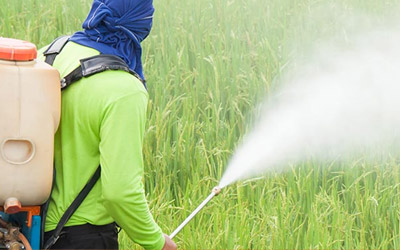
- Are insecticides and pesticides used in a vet setting driver#
- Are insecticides and pesticides used in a vet setting code#
Just this week there are adverts in the veterinary press for a product that “covers 22 parasites across cats and dogs”, but how many cases of Eucoleus boehmi have you seen in your career? And did you know that a single large dog dose of that product contains the LD50 of imidacloprid for 50 million bees? Indiscriminate treatment has consequences

So, when we, as possibly the only working scientists that many of our clients have ever actually met, talk to them about the environment, there’s a very good chance that they’ll be listening to what we have to say.
Are insecticides and pesticides used in a vet setting code#
Section 6.1 of our Code of Professional Conduct states that “Veterinary surgeons must seek to ensure the protection of public health and animal health and welfare, and must consider the impact of their actions on the environment.”Īnd by happy coincidence, a recent RCVS survey found that vets are among the UK’s most trusted professionals (Loeb, 2020), ranking above doctors and dentists (although we lost out to opticians and pharmacists. The conclusion is that “A serious reduction in pesticide usage and its substitution with more sustainable, ecologically-based practices, is urgently needed to slow or reverse current trends” (Sanchez-Bayo and Wyckhuys, 2019). So maybe as much as £140 million worth of parasite medication is being used in or on pets each year, with very little testing, but “the prophylactic use of broad‐spectrum pesticides goes against the long‐established principles of integrated pest management” (Goulson, 2013). Parasite treatments account for 39.5 percent of the total (NOAH, 2019). UK populations of the grey partridge have declined 92 percent since 1967, nightingales by 93 percent, cuckoos by 77 percent and spotted flycatchers by 93 percent (Goulson, 2019).Īccording to NOAH, the UK veterinary medicines market is worth £725 million, of which half is now for pets. As a consequence, insectivorous bird numbers have also taken a huge hit. In addition, some imidacloprid is likely to be excreted by the animals in urine and faeces after absorption through the skin.Īvermectins, also used as topical parasiticides, have similarly catastrophic effects on invertebrates and therefore everything else further up the food chain. The article goes on to state that imidacloprid applied to pets can be washed off by rain, bathing or washing of bedding, which may result in the pollution of sewage, storm drains and water courses or direct pollution of a river, lake or pond if the animal is allowed to swim. The Buglife report on neonicotinoid insecticide in British freshwaters (Buglife, 2017) states that “veterinary pour-ons and flea collars are implicated as the most likely source of pollution”. Imidacloprid, to members of the genus Apis (the honey bees), is one of the most toxic chemicals ever created as an insecticide, either killing them outright, changing the way they communicate and navigate or affecting their appetite. Agrochemical pollutants, invasive species and climate change are additional causes”.
Are insecticides and pesticides used in a vet setting driver#
Four aquatic taxa are imperilled and have already lost a large proportion of species, and “habitat loss by conversion to intensive agriculture is the main driver of the declines. Sanchez-Bayo and Wyckhuys (2019) stated that over 40 percent of insect species are threatened with extinction, with Lepidoptera, Hymenoptera and dung beetles (Coleoptera) being most affected. Or how about the one in Nature in 2019 by Powney: “Widespread losses of pollinating insects in Britain” (Powney, 2019) or the Sussex Wildlife Trust’s “Insect declines and why they matter” (Goulson, 2019)?

Put bluntly, the flies and bugs don’t get squashed on your windscreen these days, largely because they aren’t there any more Many non-domesticated species appear to be undergoing population collapse all around us. Remember that 2017 article by Hallmann looking at insect populations in Germany? “More than 75 percent decline in total flying insect biomass over 27 years in protected areas” (Hallman et al., 2017). Put bluntly, the flies and bugs don’t get squashed on your windscreen these days, largely because they aren’t there any more. Well, here’s one area where we do have a huge opportunity to make a significant difference. In fact a recent BVA survey found that 89 percent of UK vets wanted to play a more active role in sustainability (BVA, 2019), but I suspect many of us struggle to see how we as individuals can take enough action to have a major impact on global CO 2 levels, rising temperatures, melting ice caps, plastic pollution and ecological collapse. Most of us are worried about the environment.


 0 kommentar(er)
0 kommentar(er)
